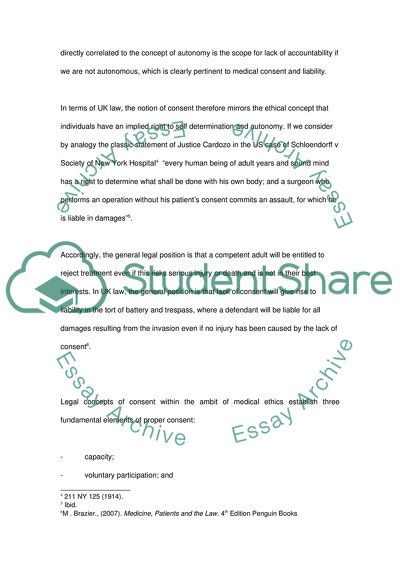Cite this document
(“1.Patient autonomy may indeed be one of the most central ethical Essay Research Paper”, n.d.)
1.Patient autonomy may indeed be one of the most central ethical Essay Research Paper. Retrieved from https://studentshare.org/law/1724295-1patient-autonomy-may-indeed-be-one-of-the-most-central-ethical-principles-in-medical-law-but-its-importance-has-become-exaggerated-discuss
1.Patient autonomy may indeed be one of the most central ethical Essay Research Paper. Retrieved from https://studentshare.org/law/1724295-1patient-autonomy-may-indeed-be-one-of-the-most-central-ethical-principles-in-medical-law-but-its-importance-has-become-exaggerated-discuss
(1.Patient Autonomy May Indeed Be One of the Most Central Ethical Essay Research Paper)
1.Patient Autonomy May Indeed Be One of the Most Central Ethical Essay Research Paper. https://studentshare.org/law/1724295-1patient-autonomy-may-indeed-be-one-of-the-most-central-ethical-principles-in-medical-law-but-its-importance-has-become-exaggerated-discuss.
1.Patient Autonomy May Indeed Be One of the Most Central Ethical Essay Research Paper. https://studentshare.org/law/1724295-1patient-autonomy-may-indeed-be-one-of-the-most-central-ethical-principles-in-medical-law-but-its-importance-has-become-exaggerated-discuss.
“1.Patient Autonomy May Indeed Be One of the Most Central Ethical Essay Research Paper”, n.d. https://studentshare.org/law/1724295-1patient-autonomy-may-indeed-be-one-of-the-most-central-ethical-principles-in-medical-law-but-its-importance-has-become-exaggerated-discuss.


